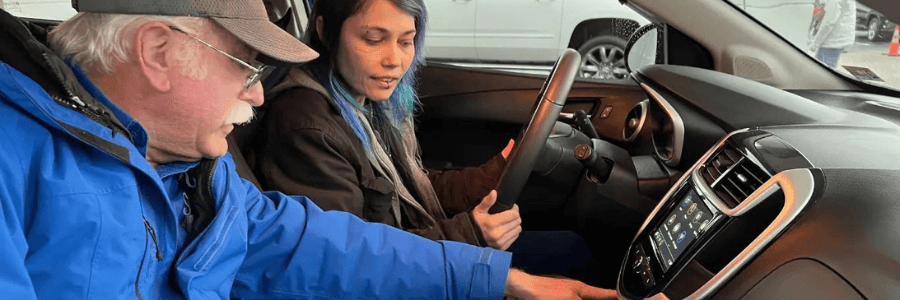How to Buy a Car from a Dealership: A Step-by-Step Guide

Buying a car is a significant decision that requires careful planning and consideration. Whether you’re a first-time buyer or looking to upgrade your current vehicle, knowing how to navigate the car-buying process can make the experience smoother and more enjoyable. In this article, we’ll provide you with a step-by-step guide on how to buy a car from a dealership, as well as some tips to make sure you are getting the best deal possible.
Research and Preparation
Before setting foot in a dealership, it’s essential to do your homework. Start by researching the type of car that best suits your needs and preferences. Consider factors like size, fuel efficiency, and safety features. You may want to create a list and rank of the 4 to 5 most important features that you need in a vehicle.
Once you’ve narrowed down your options, establish a budget and explore purchasing options. There are 3 main ways to purchase a vehicle: Cash, lease, or loan. Knowing which of these is best for you can help to speed up the process tremendously. Cash purchases are when you pay for the vehicle outright, with no loan. A lease, which is mostly reserved for new vehicles, often offers a lower payment than a loan, but it’s not for everyone. The most common option is a loan from a financial institution.
Obtaining a pre-approved loan can give you a clear understanding of your purchasing power. However, the dealership can provide you with options that may not be available to you otherwise. For example, you are one person going to one bank for one loan on one vehicle. A dealership, on the other hand, sends out hundreds of loans to hundreds of financial institutions for hundreds of customers every month. Having a dealership help you secure financing for your vehicle can be a big benefit to you.
Choosing the Right Dealership
Selecting the right dealership is crucial to a successful car-buying experience. Look for dealerships with a solid reputation, positive customer reviews, and a commitment to transparency. Traditional wisdom says that if you have a specific make or model in mind, consider dealerships that specialize in that brand. It is true that a dealership with expertise in your desired vehicle can provide valuable insights and recommendations. However, in today’s world, many dealerships will carry multiple brands of preowned vehicles. The real key in today’s market is to make sure that the salesperson you are working with is well versed and up to speed on the vehicle they are selling.
Test-Driving and Inspection
Test-driving is an essential part of the car-buying process. It allows you to get a feel for the vehicle’s performance, comfort, and handling. Take the time to test-drive multiple cars to compare and contrast. During the test drive, pay attention to how the car responds and listen for any unusual sounds.
After test-driving, thoroughly inspect the car’s exterior and interior. Look for signs of wear and tear, check the tires, and inspect the engine bay. Don’t hesitate to ask the dealership’s staff about the vehicle’s maintenance history and any prior accidents. Also, if you have a preferred technician, any reputable dealership should allow you to take the vehicle to be checked by an independent party (unless it is a specialty or luxury vehicle).
Negotiating the Deal
Negotiating the price of the car is a crucial step. Start by researching the market value of the vehicle you’re interested in to have a baseline for negotiations. Be prepared to discuss trade-ins, incentives, and additional costs like taxes and fees. Don’t be afraid to negotiate with the salesperson, and consider getting a second opinion if needed. It is important to note that vehicle values quoted from Kelley Blue Book, NADA, and Black Book may not reflect the true value of the vehicle you are considering purchasing.
Negotiating is only necessary if you are not getting enough value for the price that you are paying for the vehicle. Most importantly, a trusted relationship with the salesperson and dealership will pay for itself. Also, added value, such as included maintenance and/or warranties, are extremely important to the value of the vehicle you are purchasing. If the value of doing business with a particular dealership or salesperson is higher, then price and negotiating becomes much less important.
Finalizing the Paperwork
Once you’ve reached an agreement, it’s time to finalize the paperwork. This step typically involves the dealership’s finance department. Be sure to read and understand all contracts, warranties, and any additional services you’re purchasing – the value must exceed the price you are paying. Ask questions if anything is unclear, and only sign when you’re confident in your decision.
Taking Delivery of Your New Car
The final step is taking delivery of your new car. Before driving off the lot, inspect the vehicle one last time to ensure it meets your expectations and is free from any issues. Familiarize yourself with the car’s features and ask the dealership to explain any technology or systems you’re unfamiliar with. Don’t forget to take advantage of any loyalty programs or free offers from the manufacturer.
Find Your Next Vehicle at Strosnider
Buying a car from a dealership can be a straightforward and rewarding process when approached with the right knowledge and preparation. By following these steps and taking your time to make informed decisions, you can drive away with the perfect vehicle that meets your needs and fits your budget.
We hope this guide has been helpful in demystifying the car-buying process. Remember that our dealership is here to assist you every step of the way. Feel free to reach out to us with any questions or to explore our wide selection of vehicles. Happy car shopping!